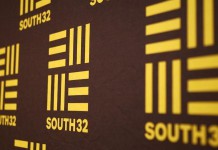[miningmx.com] — HARMONY Gold may still not be back in profit, but newly confirmed CEO Graham Briggs is moving fast with radical actions to get the world’s fifth biggest gold producer back in the black.
As he told Friday morning’s quarterly results briefing, gold mining is an exciting place to be right now, and it should get better.
Some of the steps he’s taken really make one wonder just how much his predecessor, Bernard Swanepoel, had lost the plot in his last year or two. Under Swanepoel, Harmony’s value proposition was that it ran mining operations leaner and cheaper than its peers. Yet, by decentralising certain services back to the mines, Harmony has now cut its complement by no less than 700.
That formed a large component of the 2,100 lay-offs during the quarter, in addition to which contractors were cut by 2,800 and 4,900 workers were redeployed to more profitable operations, or to replace contractors.
Briggs stressed that care was taken in the retrenchment process to ensure that no scarce skills were lost.
In other changes, Harmony has reverted from its “coach” structure to a traditional mine captain-shift boss set-up. And Swanepoel’s much vaunted continuous operations (conops) has been abandoned at Masimong, though there was no update on its survival chances elsewhere.
Production levels were hit by the closure of St Helena, a slight drop in group-wide grade, and the problems and enforced closure of Elandsrand, which was at full production for only between three and four weeks.
But group gold production fell only from 17,900 kg in September to 17,100 kg. Total cash costs fell by 8% or R246m, leaving cost per kg of continuing operations virtually unchanged at R133,200 (R132,900).
Financial director Frank Abbott says about R150m of the cost savings came at what are now called continuing operations – another of Swanepoel’s fads to have gone is his breakdown of the mines into quality, growth and leveraged assets. The classifications are now South African underground (which coincides with the continuing operations), South African surface and International.
Cash operating profit rose from continuing operations rose from R314m to R450m, with the margin up from 14.9% to 21.4%.
While other charges were little changed from the September quarter, restructuring costs and a doubtful debt provision each absorbed R75m, but helped by a R220m positive swing in the contribution of discontinued operations, the headline loss per share for the quarter fell from 169c to 55c.
In other developments, as has already been reported an agreement was signed for a joint venture to develop the Randfontein uranium assets. Australian interests were exited and what Briggs calls “a handful” of potential partners for the Hidden Valley project, in Papua-New Guinea, have been identified.
Initial drilling results at the Nambonga North gold/copper site, 2km from Golpu, have been encouraging.
Because of Hidden Valley, expansion capex will peak this financial year, at about R4bn, falling back to R2.5bn or just under in financial 2009.
In the March quarter, Elandsrand will be back in full production. The first gold has also been poured at Phakiso, and Briggs hopes for some recovery in average grade from December 4.8g/t towards the long-term objective of 5g/t-plus. These developments should offset the loss of production elsewhere, and Harmony hopes to maintain production around the December quarter’s 17t for at least the next two quarters.
Answering some slightly sceptical questioning, Abbott reiterated that Harmony is still hoping to keep total costs flat this quarter, helped by a R100m saving on labour costs as a result of the lay-offs.
It seems to be less affected by the power crisis than most underground miners. Briggs says it’s difficult to be precise, but Harmony reckons it lost about 800kg from recent outages. It also reckons it cut its usage by 3% by greater efficiency; it’s now doing its own distribution, and thinks it’s controlling the position fairly well.
As with cost control, Harmony seems to be doing better than some of its peers. And, though Briggs didn’t say so, the closure of St Helena presumably released a substantial amount that could be diverted elsewhere.
Doing his own back of the envelope figuring, Briggs mused that if gold stays at its current R223,000/kg (US$930/oz at R7.45=$1), against R163,000/kg in December, and costs are held at R133,000/kg, the operating margin rises from R30,000/kg to R90,000/kg.
He left it to the audience to infer that that implies a trebling of the operating profit. If that materialises, Harmony should indeed be back in the black. But Harmony has disappointed so often in recent years that investors won’t be rushing to count their chickens.











